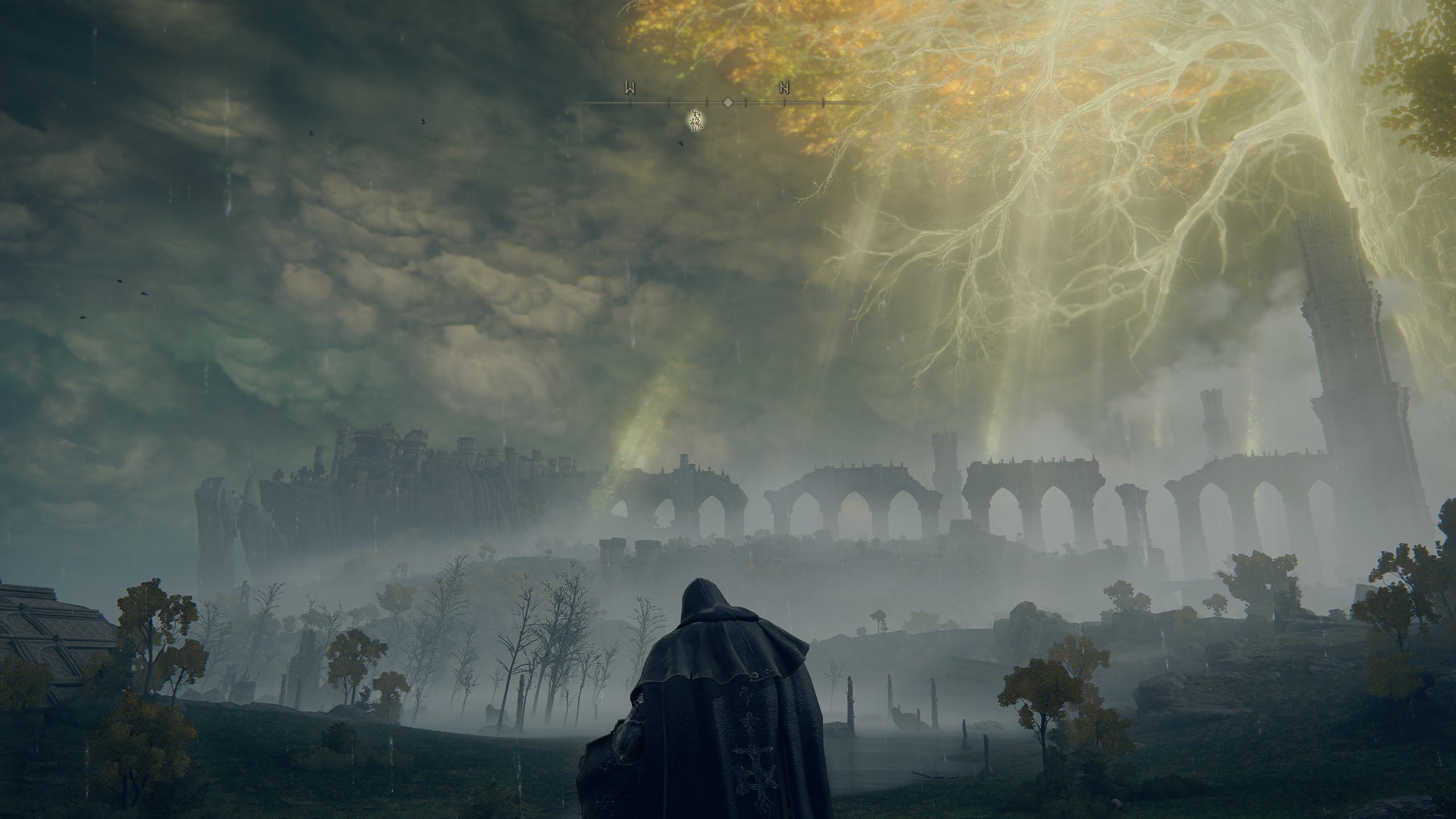At his 2018 GDC Talk, the designer of Nier, Yoko Taro, revealed a clever trick to how his games work. Being inspired by modern open world games but without the resources to create one themselves, they trick the player to make the world feel larger than it is.
First, the player plays the game through with a set map size, thinking this is the entire game. Not large, but respectable, fitting for the game at the time.
But this is a lie.
The game is larger, but this is not revealed to the player until much, much later. And when this expansion happens the player is surprised and enthralled—the world expands, becomes something more. The map doesn’t get physically larger, but it changes, new things are added, old areas gain new life as the geography physically changes. This is a revelation when it happens.
If they revealed these changes up front,
showed the player the entire game from the beginning, they would feel no
surprise. No revelation. The final game isn’t any bigger or richer than most
other games. It is only because the game was even less before that this
new space feels powerful and expansive.
This is a really clever use of few resources. They designed the game of a certain size, and then made a smaller circle inside that, which is all they reveal at first. Present this small circle to the player with a nice bow and the player will enjoy it, and then blow their expectations wide open. This way the developers get far more leverage out of what they have, without making more. It is a trick Yoko Taro has used for both his Nier games, and it works very effectively both times, even if you know it is coming.
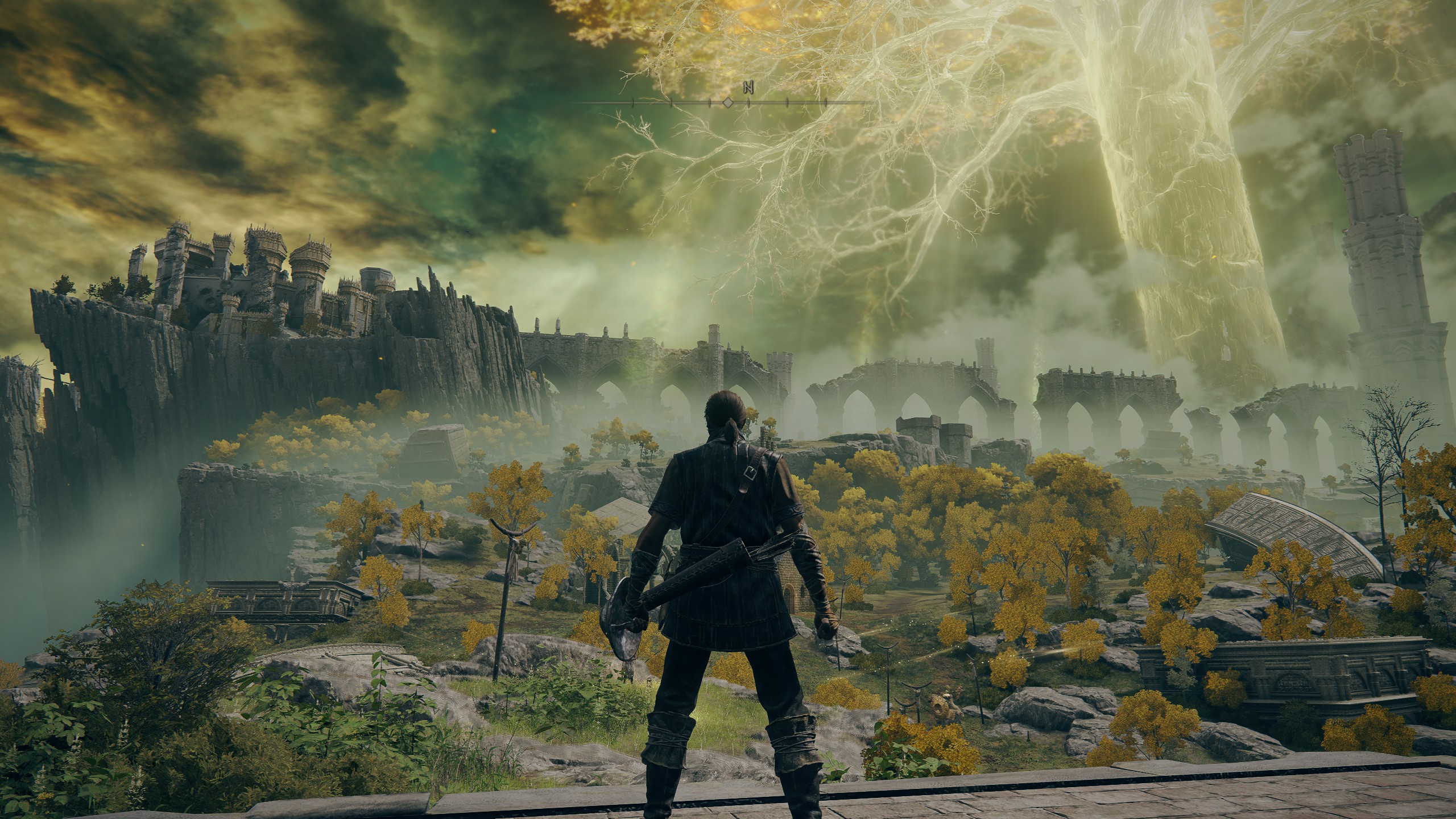
And now I want to talk about Elden Ring. What a surprise. I want to talk about the most anticipated game of the last two years, most likely the biggest game of 2022, that everyone is talking about so much it has made my Twitter almost unusable because of spoilers. I haven’t played that much yet so I can’t share many spoilers here either, but the moment I saw how the map in Elden Ring worked I knew I had to write about it.
Yes, I’m going to talk about how the player reveals the map in Elden Ring. That’s what this blog post is about.
Just the map.
See, the map of Elden Ring is tiny.
At first.
You start the game and look around and see some giant vistas, expansive horizons, huge trees and mountains in the distance. And then you open the map and it is only the nearby vicinity. It seems big and open at first, because everything is new, but because its edges are unclear and undetailed it is hard to tell how much detail is in the map and how much is mere background. As you traverse across the beautiful, harrowing landscape you quickly realize you’ve traversed across half of what your map has on it. But that can’t be true, because you can see more land that way. And you keep going and then you look at the map again. And you are just as far from the edge as you were before. But there is just more map.
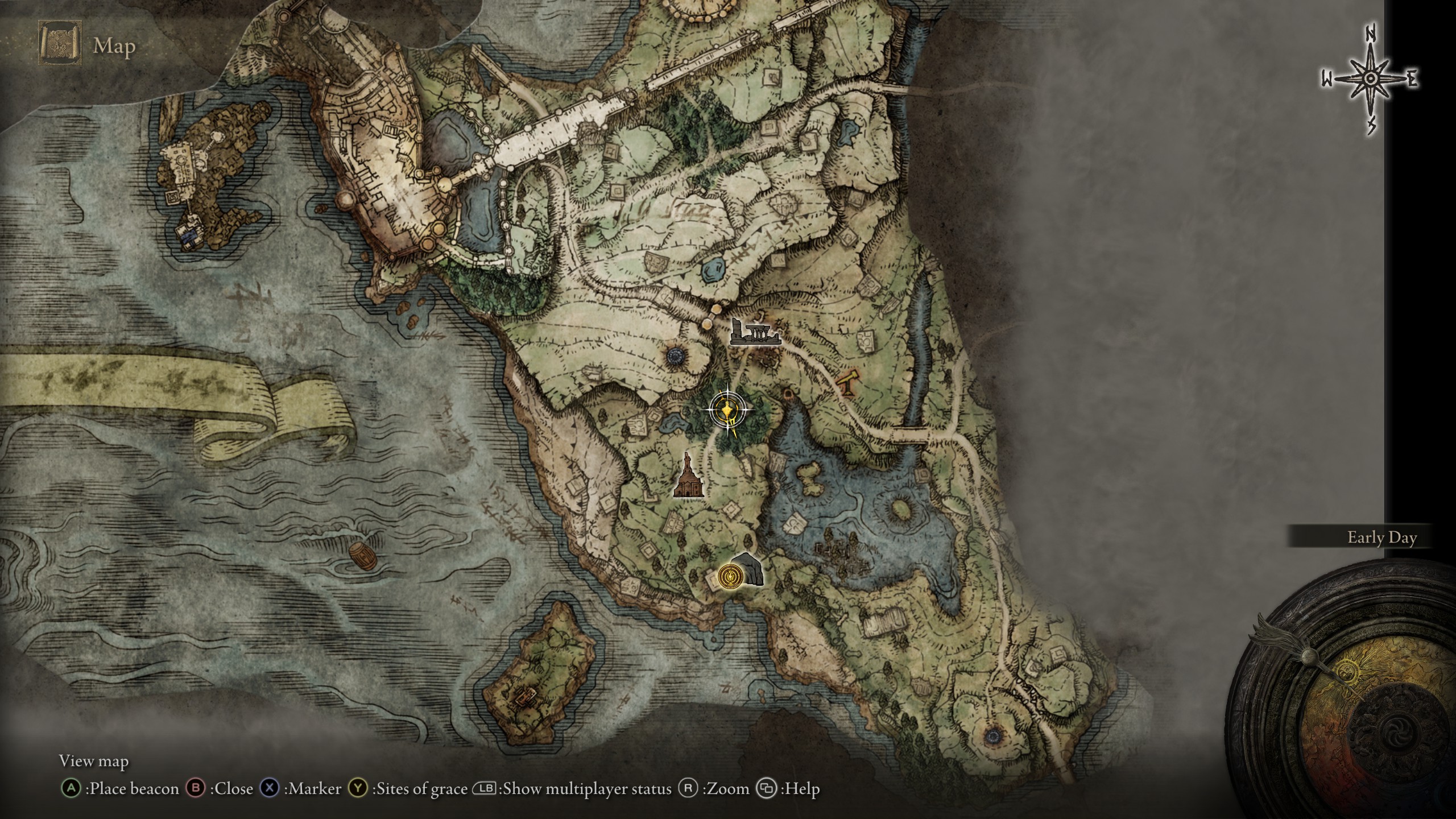
You keep walking and the map gets physically bigger, zooms out more, its edges once again move. More landmarks you discover plop in as you find them. A church here. Some ruins there. All matching neatly to your path. And yet the edge of the world again escapes you.
You see what this is doing?
It is doing the Nier-circle trick, over and over and over
again.
It keeps showing you “the full map” and that map keeps
getting bigger as you hit its edges.
Elden Ring feels impossibly large because of this. I’ve seen so many people say this game is much bigger than they expected, and while it IS in Reality Huge, I think this “trick” is also a big part of it. This continuing sense of expansion, of feeling like the world is opening up and becoming more than it was, this forever sense that there is just more out there, that you don’t know where the actual edges of the world are yet, is just wonderful.
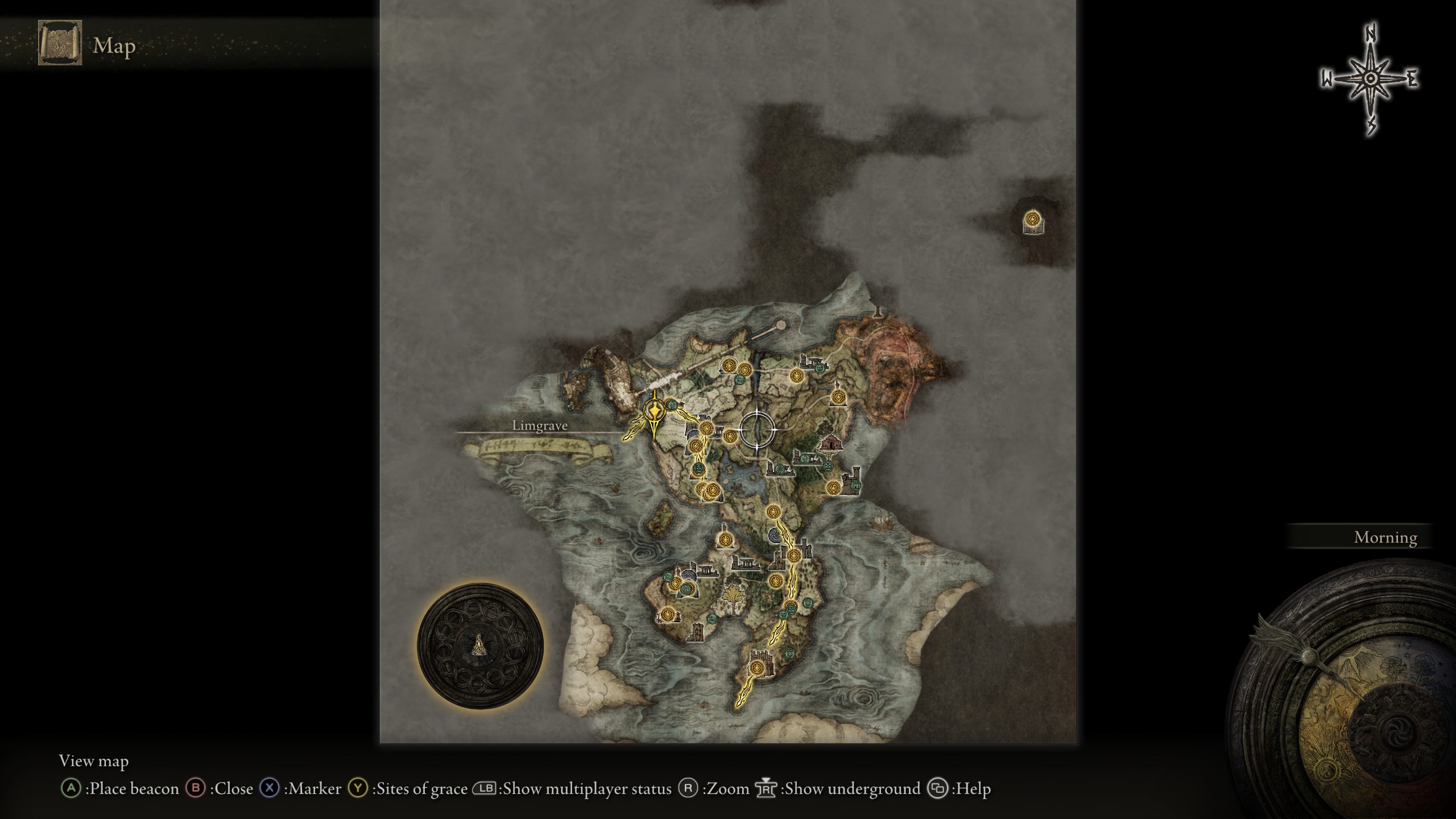
Contrast this to most other open world games. Any one,
really. Take any boring Ubisoft open world. Take even Breath of the Wild, which also falls
victim to this, even though it does have a Very Good Map, in general.
Even if the map is not revealed (as in “filled in”) when you start, you can
zoom out and see the entire scale of it from hour one. This immediately
shrinks the space into an understandable size. Even if it is "huge" in square meters. You see how much is left, you
see how much you’ve done. You understand that you’ve now been through a third
of what this world has to offer.
In Elden Ring, it takes a very, very long time to get that sense of comprehension. The world forever feels bigger than you can grasp.
The concept of the “sublime” has hovered around video game scholarship for a bit, even in Dark Souls, which naturally shares a lot of similarities with Elden Ring. But it is not until Elden Ring I have truly felt it this strongly in the mere navigation. Without getting too bogged down in the philosophical variations, I will here use the sublime in a simple way. Something is sublime when it achieves a sense of greatness that is beyond our grasp of understanding, something so big and unfathomable, and maybe terrifying, that it defies logic. It feels unbounded, lifted from reality, something otherworldly. It’s totality escapes you. The moment it becomes familiar, becomes understandable, becomes trite, it loses this quality.
Many games are able to achieve this in bursts, especially in the early stages, when everything feels new and wonderful. But upon mastery this sense is often lost, and we leave it behind for something else—not necessarily worse, but it is exceedingly hard to maintain this quality (one of the few games that succeed with staying sublime even through the ending is Outer Wilds, another one of the reasons that game is spectacular (see, I squeezed in Outer Wilds here too. look at me go)). And the previous FromSoft games like Dark Souls have achieved this too, especially in their area design and worldbuilding, and by not having a map.
Not letting the player easily chart the world achieves this effect very well. But for Elden Ring, the world is of such a different scale they could not avoid making a map and expect players to navigate it, so they found a way to replicate that feeling of their smaller games onto a big expansive space. How the map functions is no accident and it is crucial to how well Elden Ring’s open world works.
If I could see the entire map at once, it would feel a lot less sublime, a lot quicker. I could see the edges. I could grasp how far I am from them. I can hold it all in my head. I can place myself in relation to a total, complete picture of the world. It would become familiar.
I have not finished Elden Ring, so I have no idea how long it will keep up, but from what I have gathered from every one else, this feeling does last for a really long time. And my point here is I think the map is more than a little responsible for that.
It is such a simple thing, in fact. It is a mere zoom function. A fog of war. And it is of course not the only element contributing to this feeling of sublime you get from Elden Ring. But man, does it work wonders.
I do, however, want to contrast this with a different
example, of the reverse. Because showing the map up front can also be used for effect.
I want to talk about Red Dead Redemption 2. That game, like most others, reveals the scale of the map immediately. You can zoom out and see the whole space and it is large, oh boy is it big. However, the careful player will notice something interesting. There is a whole separate map to the left of the map of where the player is now. And in between these two segments, right in the middle, is the town of “Blackwater”, an important landmark that the player will know from Red Dead 1 already. In that game, Blackwater was on the very east of the map, meaning that the player can piece together that this left chunk is the landscape from the first game, hidden to the west of where we currently are.
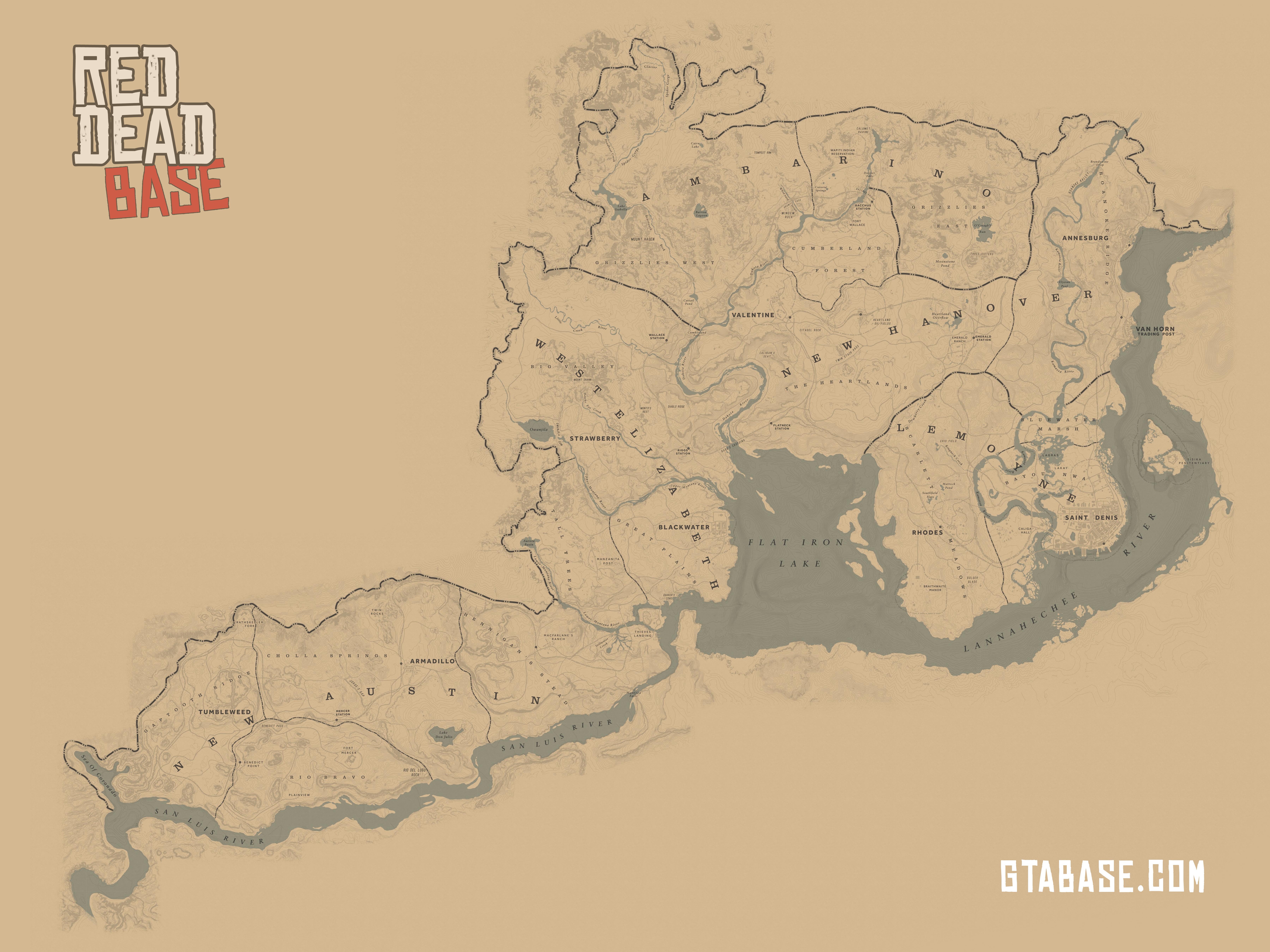
This ties into the story, as the whole time the gang of criminals you are a part of are trying to move west, back into “the real America”, escaping the industrialization and modernization that is coming in from the east. The gang is trying, though, but they can’t. Blackwater is blocked off with a giant bounty on the player’s head, so as soon as the you move into that county, you will get scores of bounty hunters on your neck. And the story pushes the gang, against their will, further and further east.
But. The player can see the map. They know there is this whole space to the west, this new frontier they remember from the previous game, this true open west. They just have to get there.
Just one last job and get rid of that bounty and we can finally go.
And the player keeps thinking, I must get there, right? The whole map is there. There must be some story in that space. I know how games work. Otherwise why build the map? A whole second half of the game must take place over there!
I’m going to spoil Red Dead Redemption 2 now.
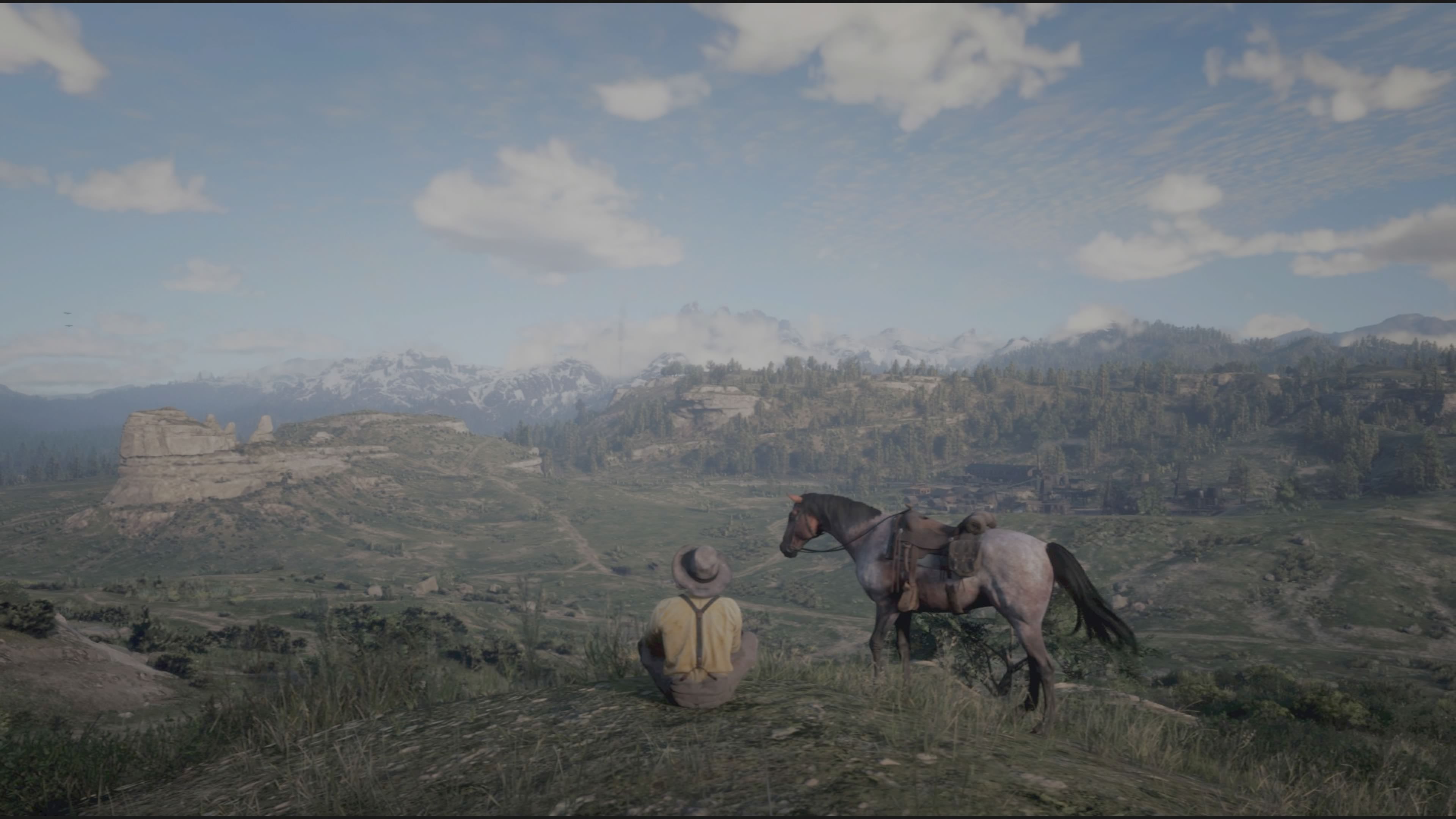
The story never goes there. The gang never gets to go west. Only in the Epilogue do you get to Blackwater, and not much further. Armadillo, the iconic western town from the first game? It’s there. But the story never takes you there.
After the story is over, you can ride there, by yourself, a
true lone cowboy. And the town is deserted, a plague has befallen it, burnt
corpses lying in the street.
The other areas out west are similarly empty, hollow. The
main map has side quests and activities, towns and cities with populations and
people. The West has… almost nothing. It is a big expansive, wild place. But
you can only ride through it alone, thinking what could have been.
You might say there is not a lot here because they didn’t
have any story missions in this area, but they put it there. The whole damn
thing. That is already a huge investment. And there's nothing. This is just a ton of land.
This is a setup. We are so used to seeing a map in a game and expect the story to take us around it, place by place, until we have revealed it all. Red Dead 2 specifically toys with that expectation, dangling it in front of the player's face. You feel how close The Promised West is. It is RIGHT THERE. But you never get there, echoing the emotional story of the characters. As a player, you feel that exact same want, that wish to go back and see the areas you remember fondly, to go out into the horizon exploring, but obligations keep pushing you away. You keep thinking it can’t continue, that there must be an end to this madness because why else would it be there, but no. Red Dead Redemption 2 is a tragedy, and that huge empty space was the setup.

I will say, like most things Red Dead 2 does, I do not think that every game can copy that trick. It is an incredibly expensive trick and, honestly, maybe not
worth it in the grand scheme, to have an entire separate space of map (even if
it is an old one remade) just… sit there for expectations. There are good
reasons why the stories of most games take the player around the whole space:
They built that space to be used. It is a large waste of resources. But I am also, I have to admit, in awe of the audacity of this bit of brilliant storytelling.
This example is here to show that you can do the opposite. I
am not arguing for the idea that Every Game should have Elden Ring’s map
system, although I do think a lot would benefit from it. If you want the world
to feel huge and not just be huge, this is a very good way to do
it. I was so happy when I realized this is how the map works. Because so few games care enough to make the map special.
The map is a part of a game too, and the player will set
their expectations based on it, interact with the game differently because of
it. The mere presence of a map has consequences to how the player explores. Elden Ring shows that From Software knows this very well, and
that they also understand how to utilize a map now that they finally had to make one.
